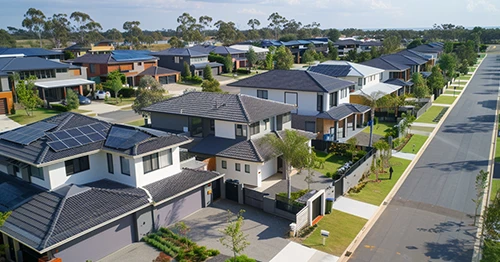Updated: 26 Feb, 2025
Westpac has become the first of Australia’s largest banks to increase its Standard Variable Rates and it’s “almost certain” the other Big 4 will follow.
Update: ANZ and Commonwealth Bank announced that they will also be increasing their variable interest rates.
Get in touch with one of our mortgage brokers and find out if you could be getting a better deal right now with another lender.
Call 1300 889 743 or complete our online enquiry form today to find out if you’re eligible to refinance your home loan.
How much have rates increased?
From 19 September, Westpac will lift rates by 14 basis points for both home loans and investment loans, as well as borrowers making principle and interest (P&I) and interest only repayments.
Standard Variable Rate for owner-occupier home loans (homeowners)
- P&I: The rate has increased from 5.24% per annum to 5.38% p.a.
- Interest only: The rate has increased from 5.83% p.a. to 5.97% p.a.
Standard Variable Rate for investment loans
- P&I: The rate has increased from 5.79% per annum to 5.93% p.a.
- Interest only: The rate has increased from 6.30% p.a. to 6.44% p.a.
How much will my mortgage repayments increase?
Let’s say you have $500,000 owing on your owner-occupied mortgage and you’re paying P&I at 5.24%p.a.
With a 14 basis point rate increase, your home loan repayments would increase by $43 per month or by more than $500 per year.
Try our mortgage repayment calculator to discover how much your repayments will increase.
When will the other big banks lift their rates?
It’s “almost certain” that Commonwealth Bank (CBA), ANZ and National Australia Bank (NAB) will increase their rates, Home Loan Experts managing director Otto Dargan said.
It’s really been a waiting game for Westpac.
They’ve been holding out so they didn’t cop flack from the public for increasing rates amid the Royal Commission into Misconduct in the Banking, Superannuation and Financial Services.
Banks are in enough hot water as it is!
“Many smaller lenders have already made similar rate increases of 0.5% – 0.15%,” Mr Dargan said.
He urged all borrowers to check their home loan rate in a months time. By that time, it’s very likely the other major banks will make similar decisions.
Should I just switch products instead?
Variable rates are currently at historic lows compared to fixed rates.
However, lenders have been lifting rates outside of RBA rate changes (Reserve Bank of Australia official cash rate) for a few months now so you may want to consider at least fixing part of your mortgage.
If you have an interest only home loan, many of our customers have already switched to principle and interest (P&I) to avoid paying a higher interest rate.
Of course, it’s important to consider your long term goals.
The long-term benefits of paying P&I can result in short-term opportunity costs if your plan is to maintain your cash flow so you can rapidly grow your portfolio.
You can switch to P&I at any time so call your lender directly to make this happen or simply let your mortgage broker know and they will do this for you.
Why did Westpac increase their home loan rates?
Westpac chief executive George Frazis pointed to the increase in the bank’s cost of funding as the main driver for their rate hike decision.
A banks’ cost of funding is basically the interest that financial institutions pay to money markets to fund and package mortgages. Ultimately, it’s costing them more to do business.
“We now believe wholesale funding costs will remain high for the foreseeable future,” Frazis said.
The major increases are coming from offshore funding as well as increasing compliance costs from the ongoing Royal Commission.
The latest news from Westpac follows their decision to shut up shop on SMSF loans.
Westpac chief executive George Frazis pointed to the increase in the bank’s cost of funding as the main driver for their rate hike decision.
A banks’ cost of funding is basically the interest that financial institutions pay to money markets to fund and package mortgages. Ultimately, it’s costing them more to do business.
“We now believe wholesale funding costs will remain high for the foreseeable future,” Frazis said.
The major increases are coming from offshore funding as well as increasing compliance costs from the ongoing Royal Commission.
The latest news from Westpac follows their decision to shut up shop on SMSF loans.





